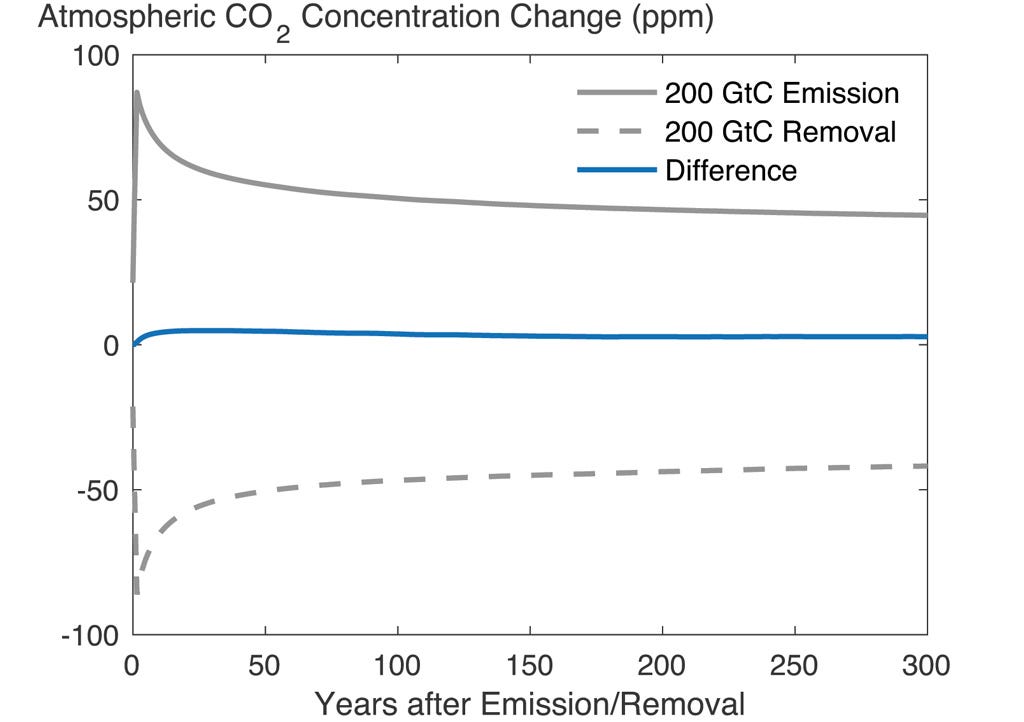In November, COP26 will be the highlight of the year in terms of climate policy. The goal is to commit to further reductions in greenhouse gas emissions to reduce the harmful effects of climate change. In the first half of this year, we have already seen several nations (most prominently the US) commit to more ambitious reduction targets.
And throughout this year, investors who cared to pay attention could hardly take a break between all the announcements of companies committing to becoming net-zero by 2030, 2050, or any other year. This is good news, but the problem may lie in the three letters ‘n’, ‘e’, and ‘t’. Implicit in these net-zero goals is that one tonne of greenhouse gas emissions removed from the atmosphere counts as much as one tonne of greenhouse gas emissions released. In other words, the underlying assumption is that the climate is a linear function of the amount of greenhouse gases contained in it.
This linearity may hold on the margin when we are talking about one person driving his or her car and emitting a couple of tons of CO2 and other greenhouse gases. But on a global scale, we are emitting thousands of tonnes every year and at that scale, it is unknown, if the reaction of the climate to greenhouse gas emissions is still linear.
In fact, a new article in Nature Climate Change hints that this might be a major flaw in our climate targets and in the actions taken to mitigate climate change. Using a climate model of medium complexity, the researchers looked at the reaction to shocks of different sizes and the long-term change in CO2 levels. It turned out that adding 100Gt of CO2 to the atmosphere has a bigger effect than removing 100Gt of CO2. The net effect is roughly 3% for a 100Gt shock but increases to 18% for a 500Gt shock. The chart below shows the difference in long-term CO2 concentrations for a 200Gt addition and a 200Gt reduction in CO2 as well as the net effect between the two which is slightly positive.
Effect of 200Gt shocks of CO2 to the atmosphere
Source: Zickfeld et al. (2021)
I know, every forecast is only as good as the model used to make it and these are model forecasts, but there might be good reasons for this asymmetric response. For example, we know that with higher CO2 concentrations in the atmosphere, trees and other plants grow faster and thus remove more CO2 from the atmosphere. But this CO2 fertilisation effect is nonlinear and declines for higher CO2 concentrations. If you have ever dealt with plants you know that fertilising them will help them grow, but above a certain level, more fertiliser just doesn’t give you any added benefits and if you increase the dosage even more, you might kill the plant. The same is true for CO2.
Also, the oceans are able to store enormous amounts of excess CO2 from the atmosphere. But this ability to absorb CO2 declines as the earth’s temperature and CO2 concentration rise.
In summary, once we hit certain thresholds, we move beyond the famous tipping points and then need to extract even more CO2 from the atmosphere to reverse climate change than if we had never emitted this CO2 in the first place.
As I said, so far all we have are model predictions, but if they are correct (and even the most rudimentary climate models from the 1980s have been able to predict CO2 concentrations in the atmosphere to a precision of 1% to 2% as we now know) then we might need to aim for even more ambitious goals than becoming net zero in 2050.





Climate models are notoriously INCORRECT!!